THE NEW LEXUS UX


· BOLD “CREATIVE URBAN EXPLORER” DESIGN
· THE FIRST LEXUS BUILT ON THE NEW GA–C GLOBAL ARCHITECTURE PLATFORM
· EQUIPPED WITH BRAND NEW 4THGENERATION SELF-CHARGING HYBRID POWERTRAIN
· SECOND GENERATION ‘LEXUS SAFETY SYSTEM +’ STANDARD ON ALL VERSIONS IN EUROPE (*)
The new Lexus UX offers the brand’s innovative luxury and safety in a package that combines bold new design elements and ultra-efficient new powertrains. For many customers, the UX will not only be their first Lexus, but also their first luxury vehicle.
The UX name is derived from the design team’s guiding concept and describes the vehicle’s mission:
Urban + X-over (crossover) = UX.
The Lexus UX is designed for the modern urban explorers seeking a fresh, contemporary and dynamic take on luxury driving, seeking not only what is new and exciting, but what is also relevant to their lifestyles.
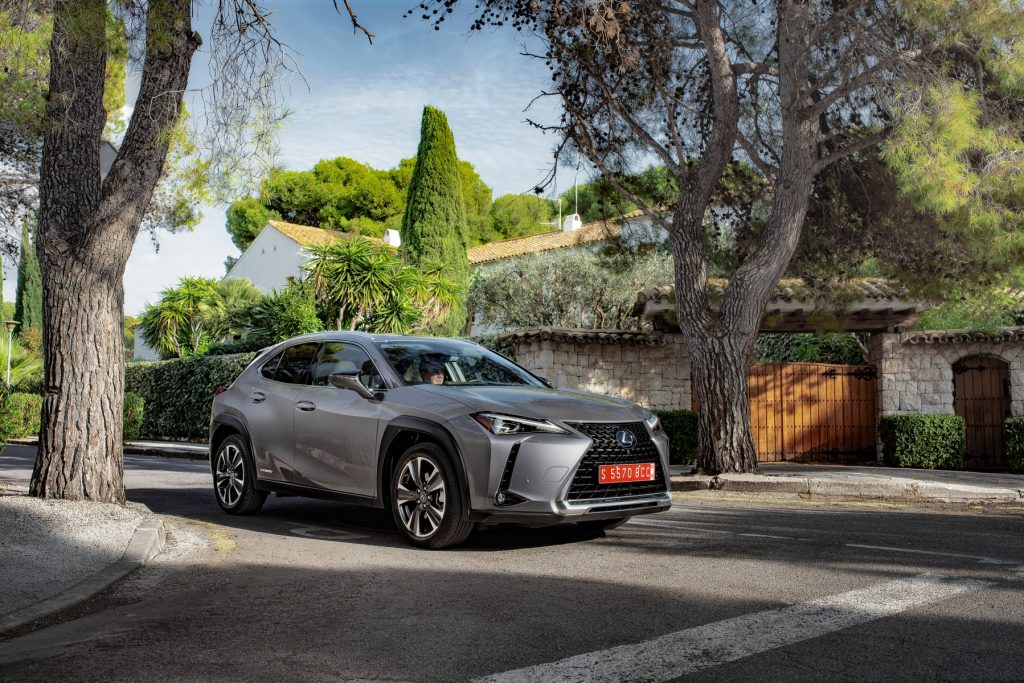
Infused with dynamic attitude, the UX is engineered to deliver quick and engaging driving with a Lexus-smooth demeanour, making it a unique entry in the luxury compact crossover segment.
The UX is the first Lexus constructed using the new Global Architecture – Compact (GA-C) platform. A lightweight yet super-rigid structure, extremely low centre of gravity and refined suspension tuning endow the UX with exemplary handling agility and ride comfort, along with a distinctive driving personality.
The UX is available in two versions: the UX 250h with a fourth-generation self-charging hybrid powertrain featuring a new high-efficiency 2.0-litre, four-cylinder petrol engine engineered specifically for this platform, and, in selected markets, the UX 200 with an almost identical 2.0-litre petrol engine with superior thermal efficiency.
(*) Europe = EU countries + Norway, Switzerland, Iceland, Turkey, Israel

EUROPE – A KEY MARKET FOR THE NEW LEXUS UX
The European market offers great potential for the new Lexus UX, a region in which customers are increasingly looking for premium quality alternatives to conventional sedans, wagons and hatchbacks that better suit modern lifestyles. Although this has led to a wealth of choice in the growing compact crossover / SUV segment, the UX stands apart from the competition as more distinctive, stylish player with strong dynamic appeal and the unique benefit of Lexus’ clean and efficient self-charging hybrid technology.
In essence the UX is a new genre of crossover, an “urban explorer” that offers a new take on what luxury means for today’s motorists. Alongside the well-established CT hatchback, it will take its place as a gateway model for Lexus and will play a key role in helping the company achieve its target of 100,000 annual sales in Europe* by 2020. Its self-charging hybrid technology has growing appeal, as the market moves away from diesel power to embrace alternative, electrified powertrains.

The UX will have broad appeal in Europe, particularly for customers with young families who want the flexibility of a crossover, but also a car that is as agile to drive around town as a hatchback, thanks to its nimble handling and excellent manoeuvrability. In this regard the UX will be the ideal partner for day-to-day travelling as well as journeys to discover new places and enjoy new experiences. At the same time, the UX will be a prime choice for downsizing households where the children have grown up, and for couples whose travel often mixes business with leisure.
As Lexus’ first compact crossover, the UX joins its larger NX and RX stable mates to complete a powerful European SUV and crossover range that fully expresses the pillars on which the brand has been transformed: brave design, exhilarating performance, imaginative technology and takumi superior craftsmanship.
*Lexus Europe sales include the European Union countries, Norway, Iceland and Switzerland, as well as the following Eastern markets: Russia, Ukraine, Kazakhstan, Caucasus region, Turkey and Israel.
STORY
FROM RADICAL DESIGN CONCEPT TO HEAD-TURNING UX CROSSOVER
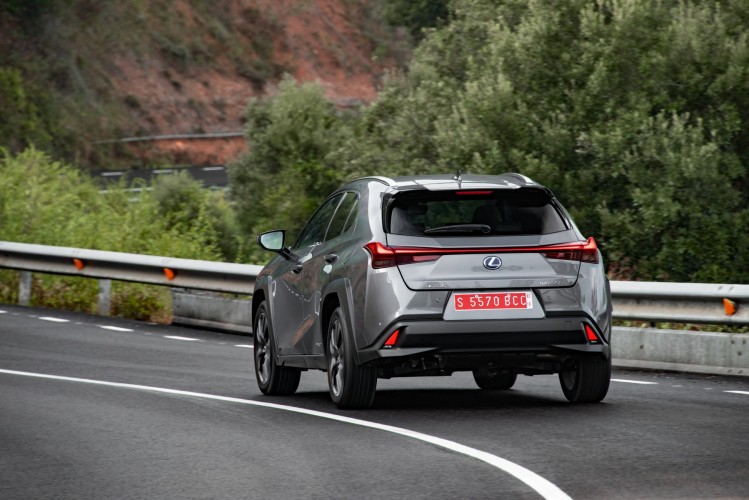
‘CROSS-CREATE’ DESIGN APPROACH
Enthused by the excitement of the UX Concept, presented at 2016 Paris Motor Show, Chief Designer Tetsuo Miki and his team worked to create a road-going version of the new crossover, presented a few months later at 2018 Geneva Motor Show.
Guided by the three Lexus design principles of ‘YET philosophy’, ‘human-centred’ and ‘pioneering,’ they developed the ‘Cross-Create’ design approach which lead to the following creative statements:
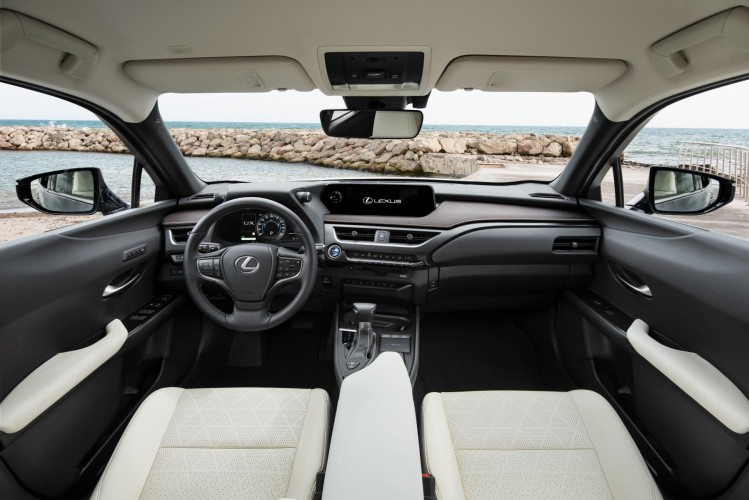
1. EXTERIOR YET INTERIOR
Using the idea of ‘engawa’, Lexus designers worked to smooth the boundary between the exterior and interior of the car, connecting them with near seamless continuity. This approach is most evident in the UX driver’s seat, where one really senses the extremities of the car, making it much easier to drive and manoeuvre.
2. RUGGED SUV YET DYNAMIC CAR
By combining distinctive features from two very different types of car — such as the rugged wheel arch mouldings of a 4×4 juxtaposed with a fin-shaped rear combination light inspired by the rear spoiler of a sports car – this unconventional mix of styles has resulted in a highly original crossover design.
3. ROBUST EXTERIOR YET GLAMOROUS IMAGE
Here the combination of robust exterior and intricately sculpted bodywork gives the UX its unique identity, resulting in an exterior which exemplifies the Lexus brand.
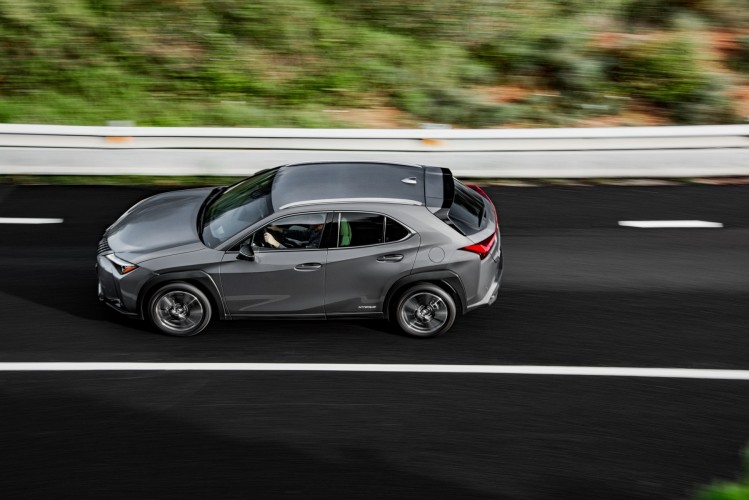
4. STYLISH YET FUNCTIONAL
Enthused by the excitement of the UX Concept, presented at 2016 Paris Motor Show, Chief Designer Tetsuo Miki and his team worked to create a road-going version of the new crossover, presented a few months later at 2018 Geneva Motor Show.
Guided by the three Lexus design principles of ‘YET philosophy’, ‘human-centred’ and ‘pioneering,’ they developed the ‘Cross-Create’ design approach which lead to the following creative statements:
Whilst wheel arch mouldings are generally installed to protect SUV bodywork from stone chips, they have a secondary function on the new UX: that of aerodynamically stabilizing the car. The same is true of the rear combination light and 17” alloy wheels, which both perform an aerodynamic function.
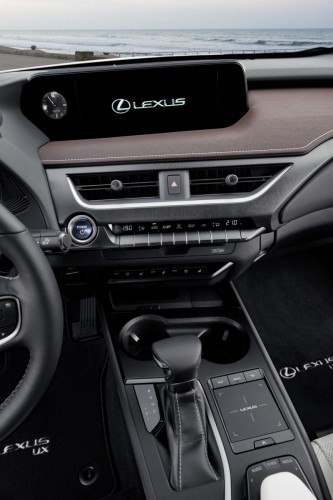
5. DRIVER-ORIENTED YET RELAXING FOR PASSENGERS
Inside, the designers created a “driver-oriented” cockpit, while at the same time using central ornamentation to achieve a smooth connection between the driver and passenger areas.
6. SECURE INTERIOR YET OPEN FEEL
Positioned low in the cabin, robust structural elements provide peace of mind. Waist upwards, the UX is designed to offer a class-leading field of vision and feeling of space.
EXTERIOR DESIGN AND AERODYNAMICS
Lexus designers created an overall design theme combining strength with refinement, stylish yet functional.
The spindle grille, though sharing its basic shape with other Lexus models, is unique to the UX. It features a new mesh pattern with individual elements that gradually change in shape as they radiate out from the central Lexus emblem. The grille creates an intriguing three-dimensional appearance that appears to change with the viewing angle.
The headlamp design completes the UX’s face, giving it a determined, confident gaze. Daytime running lights are arranged in an arrowhead motif above the headlights, emphasizing the Lexus L-shaped lighting signature. These appear like brows above the standard single-projector dual-beam LED headlights or the optional ultra-small 3-projector LED units.
The vehicle’s basic form flows out from the lines of the spindle grille to envelop the cabin. Crisp, prominent sculpted surfaces and dramatically flared front and rear wings reflect strength, while an aerodynamic profile, large wheels pushed to the corners and a bold front fascia create the agile stance.
The wheel arch mouldings that protect the body from gravel thrown up by the tyres, use airflow over their edges to reduce turbulence and lift, contributing to the vehicle’s stability.
A similar contribution is made by the rear combination lamps. The Aero Stabilising Blade Lights begin at the top of the rear wings and span the rear of the vehicle. By guiding airflow around the rear of the UX, this design also reduces turbulence and lift, contributing to vehicle stability when cornering and driving in crosswinds.
The full-width lights project a distinctive night-time signature formed by a sequence of 120 LEDs and tapering toward the centre, measuring just 3mm thick at its narrowest point. A wing-type spoiler at the rear edge of the roof, along with a flat underbody, contribute to vehicle quietness and fuel efficiency.
Takumi (Japanese term for “artisan”)modellers worked with design andengineering to refine all exterior surfaces ofthe UX. Their work was crucial to refining surfaces down to the 0.01 mm level, pushing the boundaries for what could be produced
in the body-stamping presses.
The standard 5-spoke 17×6.5-inch aluminium alloy aero ventilating wheels feature Gurney flaps along the spoke edges designed to reduce wind resistance while also increasing the airflow to cool the disc brakes.
The design pulls air from the inside of the wheel, while the air flow on the outer side of the vehicle is regulated to follow the wheel surface. The aero wheels are available ina choice of silver metallic and dark greymetallic colours. The UX also offers (nonaero)18-inch aluminium wheel designsincluding exclusive F SPORT-specificwheels.
COLOURS AS UNIQUE AS THE UX
The Lexus UX is offered in a total of 13 exterior colours that accentuate the vehicle’s bold lines.
Three exclusive new colours were developed for the UX: “Blazing Carnelian” creates vividness and a sense of depth
using a multi-layer painting process that combines a red colour base layer with a yellow interference mica layer.
“Terrane Khaki” offers a strong contrast between bright highlights and dark, calm shades. The mica particles have been
enlarged as much as possible without creating colour unevenness, achieving high brilliance while expressing toughness.
“Celestial Blue” creates a solid blue colour with glass flakes that sparkle in sunlight.
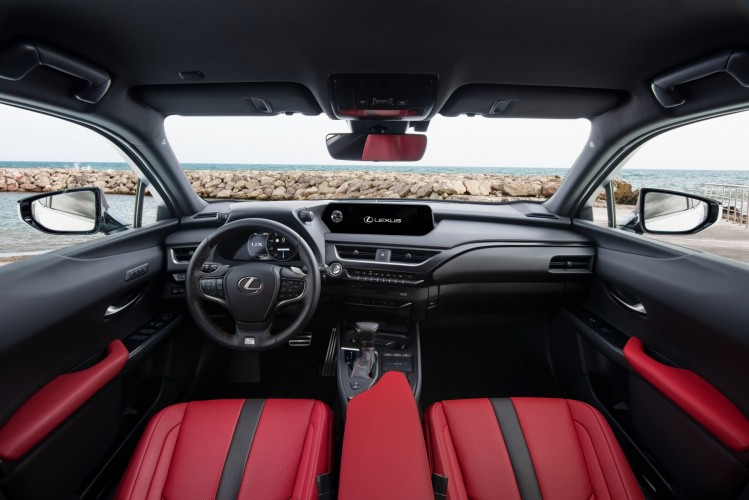
INTERIOR DESIGN: A NEW KIND OF LEXUS LUXURY
Lexus designed the UX cabin to evoke the feel of a dynamic, luxury sedan, but with the higher seating position and versatility desired in a crossover. The materials and workmanship are pure Lexus, combining Japanese traditions incraftsmanship and hospitality with innovative production techniques.
At the same time, the UX interior design also conveys a sense of security. As one example, the form of the interior door shoulders evokes a robust frame, expressing a secure feeling inside the vehicle.
Inspired by “Engawa”, a traditional Japanese architecture concept that blurs the boundary between a home’s exterior and interior, designers created a feeling of seamless continuity inside the UX. From the driver’s seat, the upper section ofthe instrument panel appears to extend out beyond the windshield into the wings. The result gives the driver an excellentfield of vision and a clear sense of the vehicle’s dimensions and tire placement. When viewed from outside the vehicle, thehood appears to connect directly to the instrument panel through the windshield.
Entering and exiting the UX is made easier through optimal placing of the hip-point and unique shaping of the seatcushion. The human-centred approach shows clearly in the instrument panel’s low, unobtrusive design and slim A-pillar mouldings, which are shaped to improve visibility. Even with a higher seating position than a standard passenger car, the reduction in distance between the hip and heel points gives the UX driver a feeling of being closer to the road than in a conventional SUV.
Car doors are the driver’s first point of contact with any vehicle. Leaving no stone unturned in their pursuit of luxury, Lexus acoustic engineers collaborated with neural scientists to create the ultimate car door sound. Based on research into the brain waves which are created when a luxury car’s door closes, the team selected bespoke materials and adjusted the door shape by tenths of a millimetre to produce a satisfying, reassuring tone.
In addition, every UX produced at our Kyushu plant is inspected by Lexus ‘Takumi’ craftspeople in a dedicated Quiet Room facility before leaving the factory, in order to spot and if necessary correct any inconsistent door closing sound.
Typical of Lexus, the UX offers a quiet driving experience, thanks to the high-strength structure and optimal placement ofspecially designed sound-absorbing and insulating materials throughout the body. Also in typical Lexus fashion, engineerstraced noises to their sources to keep them out of the cabin. Even the sound of water being thrown by the tyres is reduced.
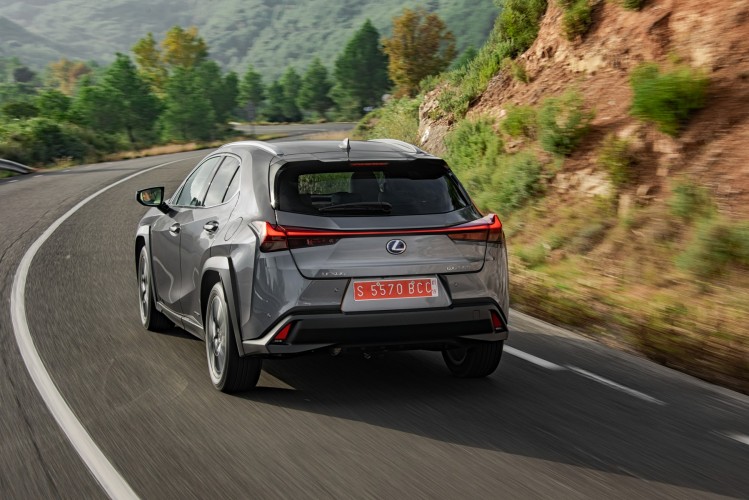
“SEAT-IN-CONTROL” CONCEPT
The UX makes the driver feel more in touch with the road thanks to a “seat-in-control” concept. Critical vehicle functions are grouped around the driver’s side of the cabin, and the seatback shape allows the driver to operate them while maintaining a comfortable, natural posture.
The seat height adjustment range is extremely broad to allow different kind of driving experiences, from a dynamic lowseating position like in a hatchback to high-seating position experience of a typical crossover.
The UX offers 6-way manual or 8-way power adjustable front seats, the latter with adjustable lumbar support for thedriver. Front seat cushions use springs and foam specially designed to gently envelop occupants and to disperse pressureunder the occupant’s sciatic area.
Lexus luxury extends throughout the UX cabin. The three-spoke steering wheel and analogue clock come from the Lexus LS, for example, and Lexus Climate Concierge, as used in other Lexus models, automatically links heating and cooling airflow with the heated and ventilated seats to optimise interior temperature comfort. Renowned Lexus attention to detail is also evident in a headliner design that eliminates distracting shadows at the windshield header, as well as control switches with a signature “Lexus feel.”
LUXURIOUS NEW FINISHES
From its inception, Lexus has drawn on Japanese traditions in craftsmanship and hospitality to infuse its vehicles with aunique sense of contemporary luxury. Lexus adapted this approach to the UX to appeal especially to younger customers experiencing their first luxury vehicle.
Thanks to a series of interviews with premium car owners conducted in different regions of the world, including Europe,to understand their expectations in terms of design and discover more about their lifestyles, Lexus designers collectedinspiring and consistent findings, which gave them a fresh perspective on luxury and helped define the UX interior’sappearance and quality.
The result is an uncluttered “less is more” approach that makes the UX feel more inviting and accessible.
A vehicle’s interior is composed of many components, such as the instrument panel, seats and ornamentation. But it is thesum of these parts that matters most, ensuring a good balance between all components.
One example is an optional leather upholstery finish with a stitching inspired by “sashiko”, a customary Japanese stitching technique that is also used in the making of judo and kendo martial arts uniforms. It’s combined with a “calculated art” perforation pattern on the lower part of the seat that is derived from mathematical curves and gradations in perfect alignment.
The Lexus UX offers a wide choice of interior colour combinations, each of which conveys a specific mood andaccentuates the premium design. The seating is available in fabric, leather or a combination of fabric and Tahara leather.The standard models offer a choice of five colours, including Cobalt, Black, White Ash, Rich Cream and Ochre. Inaddition to Black, the F SPORT also offers exclusive Flare Red and White seat colours.
The sweeping instrument panel and cabin trim offer a choice of two different grain patterns and four colours. In a Lexusfirst, the UX offers a new trim finish inspired by Japanese paper, known as “washi”. It’s common in traditional Japanese homes and it evokes a calm and warm feeling. A leather-like grain finish, also featured in the Lexus LC coupe and LS sedan, is also available.
STORY
HOW JAPANESE HERITAGE INFLUENCED THE NEW LEXUS UX CROSSOVER
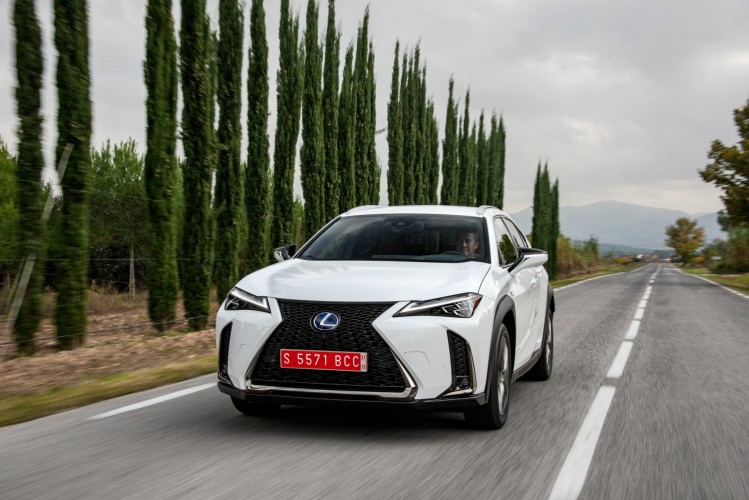
• The design team for the new UX crossover was inspired by Lexus’ rich and varied Japanese heritage:
• UX cabin shaped by ‘engawa’, an architectural concept which defines the smooth transition from interior to exterior design
• Traditional ‘sashiko’ quilting stitched by Lexus’ ‘Takumi’ craftspeople
• ‘Washi’ dashboard trim which exhibits the texture of ancient Japanese paper sliding doors
• Design features which embrace ‘Omotenashi’ hospitality
‘ENGAWA’ ARCHITECTURE
Despite the UX’s compact exterior dimensions, the design team wanted to ensure that its inside felt open and spacious. One of their solutions was inspired by a traditional Japanese architectural concept called ‘engawa’.
“Houses in Japan often have a veranda area which bridges theboundary between the inside and the outside. The Lexus UX hassomething similar: we’ve made a seamless connection betweenthe cabin and the car’s exterior,” explains UX Chief Designer
Tetsuo Miki.
This design detail gives UX passengers an open and airy feeling and the driver a precise sense of the extremities of the car, making it much easier to drive and manoeuvre in confined spaces. Overall visibility in the UX is enhanced by a low bonnet enabled by the new (GA-C) platform and the low-mounted drivetrain.
‘SASHIKO’ STITCHING
The smooth leather upholstery available on the UX is inspired by ‘sashiko’, a traditional Japanese quilting technique used in the making of judo and kendo martial arts uniforms. Requiring a steady, skilful hand, sashiko quilting is executed by Lexus’ ‘Takumi’ craftspeople, who are the artisans of the Lexus factory floor and the best of the best. The quilted leather is decorated with new
perforation patterns that form mathematical curves and gradations in perfect alignment, enhancing the appearance of the seats.
“The traditional ‘sashiko’ stitching technique is over 1,200 yearsold, and with up to 10 stitches per inch, its strength makes it popularfor judo and kendo uniforms. This craft form was also put to good use by early Japanese fire fighters, with sashiko stitching covering their protective cotton coats,” says UX Interior Designer, Keiko Shishido.
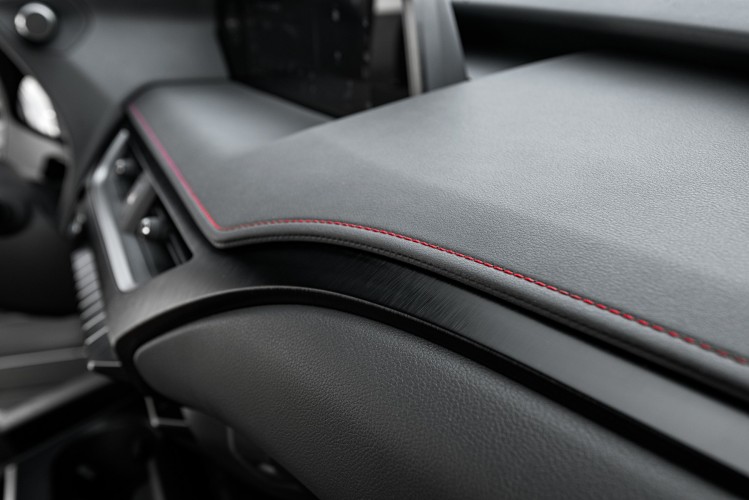
‘WASHI’ TRIM
The new UX is the first Lexus to offer dashboard trim which draws on the grain of a paper, known as ‘washi’, familiar from the ‘shoji’ paper sliding doors of traditional Japanese houses.
‘OMOTENASHI’ HOSPITALITY
Ever since the first Lexus was unveiled in 1989, the company hasgone the extra mile for its customers. Evidenced by countless awards over the last 30 years, Lexus aims to treat customers as if they were a guest in one’s home. The inspiration for this peerless level of customer service is ‘Omotenashi’,which translates from the Japanese as ‘hospitality and polite service’. However, Omotenashi is much more than excellence of service; it is an ancient concept that describes one’s ability to anticipate the needs of another.
Omotenashi also influences how Lexus designs cars like the newUX. We see it in the hands-free power tailgate, for example, whichmakes for convenient loading and unloading. And the S-Flow Climate Control, which discharges mildly acidic nano-e® ions,
filling the cabin with fresh air and creating an atmosphere that gently moisturises skin and hair.
INTUITIVE CONTROLS AND CLEAR DISPLAYS
The UX instrument panel design combines unique Lexus traits and intuitive technology. A 7-in. TFT LCD display meter digitally creates realistic, analogue gauges in a three-dimensional space.
An available head-up display underscores the Lexus UX’s high-tech feel while putting vital vehicle information in the driver’s line of sight. The large colour display projects the information to a virtual “screen” 2.5m (8 ft.) in front of the driver, making it easier to focus on the display as well as objects in front of the vehicle. The bright, high-contrast display is easy to see in daylight and in snowy conditions.
The Lexus Remote Touch Interface (RTI) with haptic interface in the UX is designed to feel as familiar to use as a smartphone. The RTI utilises intuitive operations, such as double tapping and flicking, to mimic common phone gestures. Frameless construction eliminates edges, and a special coating on the touch pad surface lets fingers easily slide over it while minimizing the appearance of fingerprints. The touchpad can recognize Roman block letters when typing a search name. Touchpad surface haptic vibrations indicates to the user when the cursor is moved, making it easier to align the cursor with the desired function button.
A switch at the base of the touch pad can call up an operation screen with related functions, such as air conditioning and navigation, enabling easier access without going through menus. In a unique touch of high-tech elegance, the Lexus logo on the pad surface is backlit at night.
IMAGINATIVE TECHNOLOGY
Lexus designers created a refined cabin atmosphere, for instance by integrating subtle LED cabin lighting. White LEDs illuminate the front foot wells, glovebox, and console switches and also serve as the dome light, map lights and cargo area light.
As another example, each of the UX’s air vents uses a new single-knob control for airflow direction and volume. By combining the two functions in a single control, the air passages of each vent could be made larger, improving airflow while reducing noise.
Luxury-grade models feature illuminated vent controls with distinctive LED light source wirelessly powered by electromagnetic resonance of two adjacent coils vibrating at the same frequency. Using the same design principle as the Lexus LC’s rear combination lamps, the vent control LEDs use mirror optics to create the effect of floating lighting depth, even though the light element is just 3mm thick.
VERSATILITY THROUGH THOUGHTFUL PACKAGING
The UX package is suited to making urban exploring easier. A 2640mm wheelbase contributes to a smooth, stable ride and cabin roominess. The 4495mm length and best-in segment 10.4m curb-to-curb turning diameter help make the Lexus UX easy to manoeuvre and convenient to park.
Getting in and out is made easier through several factors including optimal placing of the hip-point, a cut-off profile for the rocker panel below the doors and the shape of the seat cushion. For interior storage, the UX offers the largest console box in its class.
An available hands-free power rear gate makes loading the UX more convenient, and solid aluminium roof rails allow installation of a variety of accessory carriers.
Depending on model configuration, tyres and markets, the UX features a repair kit, run-flat tyres or a spare tire. The newly-developed 2ndgeneration run-flat tyres are quieter and more comfortable, while now allowing the vehicle to travel with a flat tire at speeds up to 80 km/h for up to 160 km.
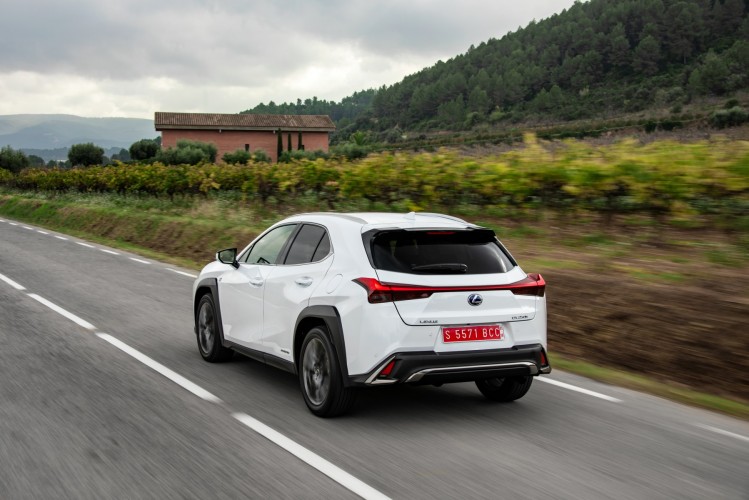
IMMERSIVE TECHNOLOGY AT YOUR FINGERTIPS
The Lexus UX models offer the latest in the brand’s multimedia and navigation technology. A 7-inch EMV (Electro Multi Vision) display is standard, and a 10.25-in. EMV display is used with the available Lexus Navigation system.
The standard Lexus Premium Sound System can play back the highest-resolution digital audio formats (WAV, FLAC, ALAC, and OGG Orbis) from a USB device, conveying more musical data than a CD. Dual rear-seat USB ports enable passengers to use and recharge their smartphones or tablets.
The standard 6-speaker system and available 8-speaker upgrade system use bamboo charcoal speaker diaphragms to reduce mass and deliver natural-sounding voices and improved mid-range sound. Both systems create a more lifelike soundstage by using tweeters mounted at the sides of the instrument panel, and reflecting sound off the windshield. The 8-speaker system adds a centre-dash tweeter, a subwoofer mounted in the luggage area and a more powerful amplifier.
The available Mark Levinson Premium Surround Sound System – a segment exclusive – uses a 13-speaker array, low-distortion 668W Class D 8-channel amplifier, Quantum Logic Surround Sound and ClariFi™ 2.0 technology to deliver an immersive concert-like sound experience in the UX.
Drivers who wish to experience the above features and many more on the new Lexus UX should contact their local Lexus dealership to arrange a test drive: www.lexus.eu
STORY
SEVEN AMAZING FEATURES ON THE NEW LEXUS UX
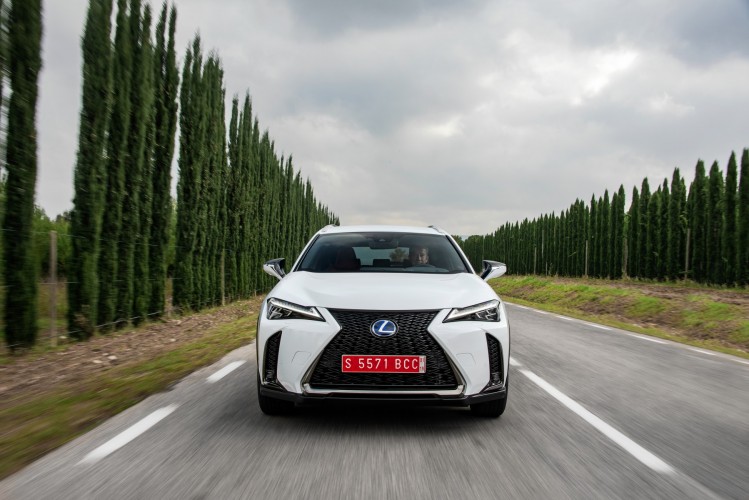
1. THE SCIENCE OF LUXURY DOOR SOUNDS
Car doors are the driver’s first point of contact point with anyvehicle. Leaving no stone unturned in their pursuit of luxury, Lexus acoustic engineers collaborated with neural scientists to arrive at the ultimate car door sound. Based on research into the brain
waves which are created when a luxury car’s door closes, the team selected bespoke materials and adjusted the door shape by tenths of a millimetre to produce a satisfying, reassuring tone. Finally, to ensure the correct closing sound, Lexus’ ‘Takumi’ craftspeople listen to and, where necessary, adjust each UX door in a dedicated ‘Quiet Room’ facility before the car leaves the Kyushu plant.
2. ‘SASHIKO’ STITCHING ON LEATHER SEATS
The new UX crossover can be ordered with leather seat upholstery inspired by ‘sashiko’, a traditional Japanese stitching technique used to apply protective quilting to judo and kendo uniforms. Fora distinctive visual effect reflecting the crossover’s front signaturegrille, Lexus craftspeople stitch along mathematical curves alignedwith the perforation pattern and the seat ventilation outlets. Theresult is a sophisticated fusion of art and functionality.
3. WIRELESS ILLUMINATED VENT CONTROLS
For ease of operation, each ultra-slim air vent on the new UXfeatures a single knob to control both airflow direction andintensity. On Luxury-grade models, illuminated vent controlshouse a wireless LED light source powered by electrical induction.
This advanced yet elegant detail helps the driver or front seatpassenger find the vent control in the dark. Additionally, it also
creates a comforting sense of depth, even though the illuminatedknob is only 3 mm in diameter.
4. SOPHISTICATED POWER WINDOW SYSTEM
Complementing the ambience of sophisticated luxury inside thecabin, the opening and closing of the UX’s power windows iscarefully controlled to reduce noise and juddering. Additionally, to protect the driver and passengers, all power windows are equipped with a jam and entanglement function, which prevents shirtsleeves or children’s fingers from being trapped.
5. WINDSCREEN WIPERS WHICH PAUSE FOR PASSENGERS
The wiper system in the new UX is one of the most innovative of its kind, equipped not only with an automatic sensor but
with the ability to slow down gradually so as not to impair driver concentration. Underlying the Lexus spirit of ‘Omotenashi’
(Japanese for ‘hospitality and polite service’), the wipers automatically stop when a door opens to prevent guests entering or
exiting the car from being splashed.
6. IMAGINATIVE FOLDING LUGGAGE COVER
An innovative feature which highlights the customer centric approach that Lexus takes to design, the UX’s luggage cover can
be folded like a net when not in use and stored in the car with a minimum of obstruction.
7. PRECISION-ASSEMBLED TAILGATE
The assembly of every UX crossover is performed by skilled Lexus craftspeople, using cutting-edge technology. To ensure
its smooth operation, every UX tailgate and tailgate opening is measured at around 200 different reference points prior to
assembly. The digital measuring equipment employed even allows for minute differences in temperature and humidity. Based
on this data, Lexus craftspeople are then able to adjust each UX tailgate to fit exactly, ensuring it will operate perfectly for
many years to come.
A SOLID STRUCTURE TO BUILD ON
Lexus instilled the UX with an outstanding combination of handling agility and smooth, quiet ride comfort that urban customers will find pleasing. Key to achieving that balance is building the UX around the high-strength GA-C global architecture platform. Extensive use of high-tensile steel, high-strength adhesives and Laser Screw Welding (33m of body adhesive and joints in total) results in a highly rigid structure, an essential foundation for achieving dynamic handling and luxurious ride comfort.
By using aluminium for the side doors, wings and hood and composite materials for the tailgate, the UX has the lowest centre of gravity of any vehicle in its class (594mm). As a result, the UX delivers a secure, agile feeling normally associated with lower dynamic hatches. A unique ring structure around the hatch opening and behind the rear seats increases torsional rigidity to enhance crash performance, improve handling and reduce noise and vibration.
The MacPherson strut front suspension and multilink rear suspension with trailing arms, both mounted to subframes, are specially tuned to deliver a combination of agility and comfort over well-worn urban street surfaces. Carefully refined details such as the quality of the damper oil, oil seals and friction control in the shock absorbers make a significant positive impact on ride quality.
An upper strut brace increases torsional rigidity of the engine bay, and the steering rack bolts directly to the subframe without rubber bushings for improved steering feel.
Active Cornering Assist (ACA), a function integrated with Vehicle Stability Control (VSC), helps the vehicle trace the driver’s desired line through a turn by applying some brake control on the inside wheels, suppressing the tendency to understeer. As a result, the UX drives through corners with greater precision while maintaining stability.
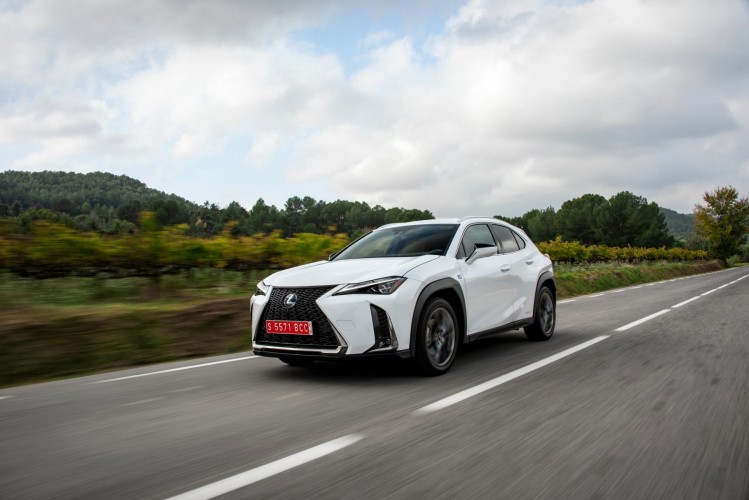
A SUSPENSION THAT ADAPTS TO YOUR NEEDS
The latest version of Lexus Adaptive Variable Suspension (AVS), which debuted on the flagship LC Coupe, is available for the UX F SPORT and Luxury grades. The new AVS system decreases body roll when cornering and enhances ride comfort over bumpy urban streets.
AVS uses linear control solenoids to vary the amounts of shock fluid to bypass the shock absorber’s piston assembly. Thus, the system can vary suspension damping through 650 levels, making its operation transparent to the vehicle occupants.
Based on signal inputs from the steering, yaw rate and linear G sensors, AVS continually adjusts damping force to minimize body roll in cornering while maintaining optimum tire contact and ride comfort on all surfaces. Damping force is reduced at low speeds and increased at high speeds. Integrated functions including Roll Posture Control, Anti-pitch Control, Repercussion Control and Roughness Sensing Control adapt AVS performance to all road surfaces and driving dynamics.
The driver can set damping performance using the Drive Select controller. When Eco, Normal or Sport S mode is selected, or when Custom mode is selected with the chassis setting in NORMAL, the damping force remains unchanged to maintain an optimal balance of ride comfort, steering response and a flat ride.
By selecting Sport S+, or Custom mode with the chassis setting in SPORT, the damping force control mode switches to firmer dampers settings to provide the most dynamic driving feel.
In addition, using Pre-Collision System Cooperative Control, AVS can instantly increase damping force to limit vehicle pitch or roll when the driving support computer judges that there is a possibility of rapid driver input to avoid a collision. VSC Cooperative Control applies appropriate damping in response to vehicle side-skid and changes in the road surface friction, helping to maintain the effectiveness of VSC.
SHARP STEERING AND MULTIPLE WHEEL OPTIONS
An Electric Power Steering system with a new compact and highly rigid column assist motor delivers handling with crisp, immediate response to driver inputs, and provides excellent steering feel.
A newly developed electric tilt and telescopic steering column is available for UX models equipped with power-adjustable front seats. In addition, on models with memory function, ingress and egress are made easier with the auto away / auto return controls linked to the driver’s seat belt and the engine start-stop switch or hybrid power switch. Using the switch, the tilt and telescopic motors can adjust the steering wheel up and down or forward and back through 40mm ranges.
Standard 17 x 6.5-inch alloy aero ventilating wheels feature 215/60R17 tyres. The optional 18-inch alloy wheels get 225/50RF18 95V run-flat tyres. F SPORT models are available with performance summer tyres.
UX 250h: NEW-GENERATION LEXUS SELF-CHARGING HYBRID DRIVE
The UX 250h is equipped with a fourth-generation Lexus Self-Charging Hybrid powertrain, featuring a brand new 2.0-litre petrol engine, a new hybrid transaxle, new compact battery and new power control unit.
With 184 DIN hp (PS) total system output (or 135 kW), the UX 250h combines high fuel efficiency with a smooth, natural and responsive driving experience.
The UX’s new 2.0-litre inline four-cylinder engine achieves class-leading 41% thermal efficiency, thanks to revolutionary laser-clad intake valve seats with an all-new intake port profile, high compression ratio (14:1), D4-S fuel injection combining direct and secondary port injectors to achieve high-speed combustion. VVT-iE intelligent variable valve-timing with an electric actuator on the intake side also enhances drivability while reducing emissions.
A continuously variable capacity oil pump and a variable cooling system with an electric water pump contribute to ultra-low internal friction, further optimising engine performance and fuel efficiency. The system also ensures quicker cabin heating on cold days and quicker cool-down when the air conditioner is used.
Exhaust heat recirculation enables quick engine warm-up to reduce emissions, while a gasoline particulate filter provides high-efficiency particulate material removal to conform to EURO6d PN (particulate number) regulations.
The UX’ hybrid system couples this new engine with two electric motor generators in a new-generation hybrid transaxle that is more compact, lighter and has less internal friction than previous Lexus hybrid systems. The Power Control Unit (PCU) is more powerful yet 20% smaller and 10% lighter.
Optimising the level of electric motor assistance and engine rpm produces a linear acceleration feel without the engine running at high revs. Engine speed is synchronised with vehicle speed to create an immediate and continuous acceleration feel.
The new transaxle mounts the electric motor generators (MG1 and MG2) coaxially rather than in-line. The resulting smaller and lighter package reduces frictional losses by 25%. In addition, MG2 is now a higher-speed motor, yielding better performance and efficiency. For the driver, the result is a lower – and best-in segment – curb-to-curb turning diameter : 10.4m, providing nimble manoeuvrability.
The Sequential Shiftmatic feature delivers responsive engine braking force in six steps with a shift feel similar to a manual transmission, using steering wheel paddle shift switches or the S position on the shift lever.
The speed at which the hybrid system can shut off the petrol engine, such as when driving on long downward slopes, has been raised to 115 km/h.
The new compact and lightweight nickel metal-hydride (NiMH) battery and compact cooling system are located below the rear seat, which supports the vehicle’s low centre of gravity.
E-FOUR ALL WHEEL DRIVE
The UX 250h is available with either front-wheel drive or E-Four electric all-wheel drive.
The E-Four all-wheel drive system uses a separate, dedicated hi-torque motor generator integrated into the rear differential. Power distribution between the front and rear axles is automatically optimised by the Vehicle Stability Control (VSC) system when accelerating, cornering, or driving on slippery surfaces. E-Four provides stable driving on uphill slopes or snow-covered roads with lower fuel consumption than a conventional all-wheel drive system that employs a power split device and driveshaft. E-Four does more than assist traction in slippery conditions: the system can actively improve stability by adjusting rear-wheel power to help correct an over- or understeer condition.
STORY
BENEFITS OF LEXUS SELF-CHARGING HYBRID SYSTEM

Powered by a fourth-generation Lexus Self-Charging Hybrid, the UX 250h is very responsive to drive. Like all Lexus hybrids, it offers better fuel efficiency and lower emissions than other petrol or diesel vehicles in its class, free from plugs or range issues. In real-life city driving, the UX 250h can use electric power for a significant part of every journey – up to 50%, depending on driving conditions.
ELECTRIC VEHICLE MODE
When cruising or accelerating slightly, the front electric motor (and extra rear electric motor on all-wheel-drive models) is able to propel the car with electric power supplied by the hybrid battery. At this point the vehicle is almost silent, uses no petrol and produces zero emissions.
DYNAMIC YET SMOOTH
At higher speeds, the ultra-smooth Atkinson Cycle petrol engine cuts in quietly while still receiving assistance from the electric motor(s) when required. Through the near perfect distribution of these two power sources, the UX 250h provides superior driving enjoyment, together with low fuel consumption and emissions.
RAPID ACCELERATION
At full acceleration, the power of the electric motor(s) instantaneously supplements the 2.0-litre petrol engine. Together they deliver a potent surge of torque, providing linear acceleration precisely when needed.
NO NEED TO PLUG-IN
On braking, or when the driver’s foot is taken off the accelerator, regenerative braking harnesses kinetic energy to generate electricity which, together with electric power produced during normal driving conditions, is stored in the hybrid battery, meaning the UX 250h never needs to be plugged in.
LOW COST OF OWNERSHIP
As well as being fun to drive, the UX 250h offers low cost of ownership and high residual value. This is due primarily to Lexus’ industry-leading experience in engineering Self-Charging Hybrids, batteries which last as long as the car itself, and the inherently low wear and tear of the Lexus system.
REDUCED SERVICING COSTS
The UX 250h has been designed without a clutch, while the starter motor and alternator are integral to the hybrid system and require no servicing or replacement over the life of the vehicle. The conventional timing belt has also been replaced by a maintenance-free timing chain. With no need to service or replace these parts, UX 250h owners can realise a saving of around €1,500 over a 5 year ownership period.
HYBRID BATTERY LIFE = CAR LIFE
With a proven reliability record over some 60 billion kilometres of driving worldwide, a Lexus hybrid battery is designed to last the entire life of the car. Rigorously engineered for performance and durability, it is covered by a 5 year, 100,000 km warranty.
LOWER BRAKE AND TYRE WEAR
Thanks to the Lexus Self-Charging Hybrid’s regenerative braking system, which delivers the first half of all braking force, both pad and disc wear are significantly reduced. Over the course of 90,000 km, a Lexus hybrid will usually require no disc replacement and just one set of replacement brake pads. Additionally, the higher tyre pressure of hybrid vehicles helps to decrease shoulder wear on tyres, while linear power delivery and the car’s balanced weight distribution reduce tyre wear even further.
UX 200: INNOVATIVE TRANSMISSION MEETS ULTRA EFFICIENT ENGINE
In some selected markets, UX is also available as a petrol variant, called UX 200, which is equipped with an almost identical 2.0-litre inline four-cylinder engine as the UX 250h.
With 171 DIN hp (PS) (or 126 kW), the UX 200 engine offers output similar to some competitors’ lower capacity turbo engines, but with less complexity, less underhood heat and lower powerplant weight for better vehicle balance. The engine produces 205 Nm of peak torque.
The absence of electric motor support means we changed camshafts, compression ratio and combustion system (not Atkinson) to obtain an even smoother and more linear power curve.
In this configuration, the 2.0-litre engine achieves a 40% thermal efficiency, a top in class result for a non-hybrid powertrain.
DRIVE MODE SELECT
UX is equipped with Lexus Drive Mode Select, which allows the driver to tailor the driving experience by selecting from three different drive modes.
Normal mode provides an optimal balance between driving performance and fuel efficiency; ECO mode maximises fuel savings across all driving conditions by smoothing the throttle response, and by moderating air conditioning operation; Sport Mode delivers quicker throttle response and increased power steering feel.
In Luxury and F SPORT models equipped with AVS, five different driving modes are available: normal, ECO, Sport S, Sport S+, and custom.
The Sport S+ further enhances the handling and stability when cornering.
By selecting Sport S+, or Custom mode with the chassis setting in SPORT, the damping force control mode switches to firmer dampers settings to provide the most dynamic driving feel.
The Custom mode enables the user to freely combine the modes of the powertrain, chassis, and air conditioning functions.
STORY
SAFETY TECHNOLOGY AND DRIVER ASSIST
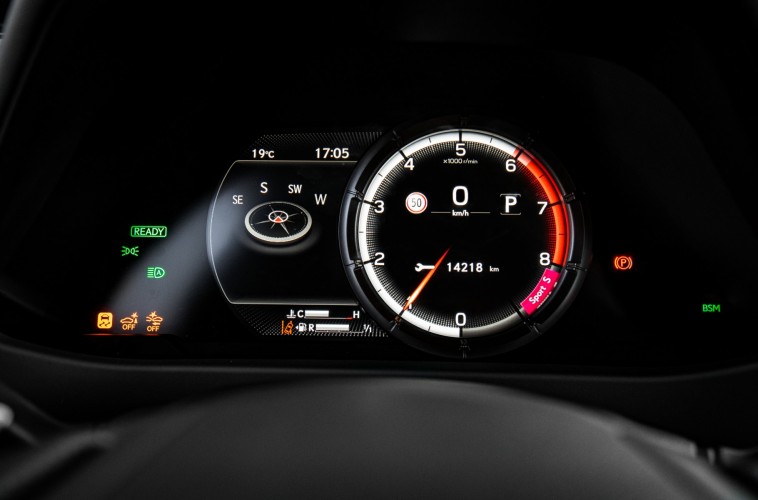
The UX is equipped with eight airbags: driver and front passenger airbags; driver and front passenger knee airbags; driver and front passenger seat-mounted side impact airbags and front to rear side curtain airbags.
It is also equipped with the second generation Lexus Safety System +, which comes as a standard equipment in all EU countries.
Lexus Safety System + is a suite of standard active safety technologies developed to support the driver and reduce the likelihood and severity of potential accidents.
The Lexus Safety System + includes All-Speed Dynamic Radar Cruise Control, Pre-Collision System (PCS) with Pedestrian Detection, Lane Tracing Assist with Lane Departure Alert and Steering Assist, Road Sign Assist (RSA), and Intelligent High-Beam headlamps/Automatic High Beam (AHB) (or Adaptive High-beam System (AHS) in option).
The Pre-Collision System (PCS) couples withDynamic Radar Cruise Control. The system can operate relative to a vehicle ahead that is traveling 10 to 180 km/h. Dynamic Radar Cruise Control with Road Sign Assist (RSA) can quickly reset the vehicle speed setting in accordance with the speed limit information recognized by RSA. The Road Sign Assistfunction can be easily activated or deactivated.
The UX is capable of low-speed following, including stop-and-go traffic, up to speeds of about 30 km/h (18 mph). Thus, the UX driver enjoys more relaxed driving in situations that can be normally annoying and fatiguing, while also gaining a measure of safety.
PCS uses camera-based detection to recognize pedestrians in daytime and low light, and its radar capability has been extended to enable detection of cyclists during the day. (In markets where PCS is not available, the UX comes standard with conventional cruise control.)
Automatic High Beam (AHB) comes standard with the Lexus Safety System +. The AHB automatically turns the high beam lamps off if another vehicle is detected and automatically turns the high beam lamps on once the vehicle is gone.
Lane Tracing Assist uses the Electric Power Steering motor to aid the drive in keeping the vehicle centred in its lane. Lane Departure Alert detects not only yellow or white traffic lanes, but also the sides of the road.
An even more sophisticated system is available in option on the UX : the Adaptive High-beam System (AHS). The AHS comes with the triple-beam LED headlamps and is designed to provide enhanced night-time visibility while controlling dazzle for oncoming vehicles. 11 independent LED chips integrated in the headlamp are enabled/disabled for precise control of the illuminated and non-illuminated areas.
Other available safety systems include Parking Support Alert that can detect crossing vehicles from the sides and static vehicles in front of or behind the UX when parking over a broader range of conditions than previous clearance sonar or rear cross traffic systems, and uses digital camera images on the centre display along with a beeper to alert the driver to potential risks.
A related Parking Support Brake system adds active drive force (throttle) and braking control to audible and visual warnings to reduce the possibility of contact with moving objects ahead or behind the UX when parking.
UX F SPORT
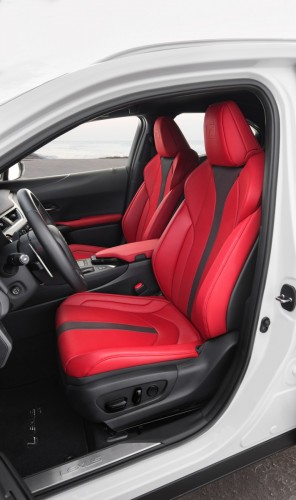
The UX F SPORT features an exclusive grille design featuring a mesh-pattern created by individual L-shaped pieces. The exclusive F SPORT front bumper hosts large fog lamp bezels with L-shaped chrome mouldings and the same mesh pattern as the grille. A revised rear bumper and jet-black trim on the front and rear mouldings complete the F SPORT look.
Two of the available 13 exterior colours, F White Nova and Sapphire Blue, are exclusive to the F SPORT grade.
F SPORT-exclusive interior features include front sports seats made with an integrated-foaming technique first developed for Lexus F models, which helps the seats conform to the occupant’s body. With this process, the upholstery is set into the mould and is then filled with foam to complete the seat in a single process. The special 8-way power-adjustable F SPORT front seats feature lumbar adjustment, as well as manual forward/backward adjustment for the headrests.
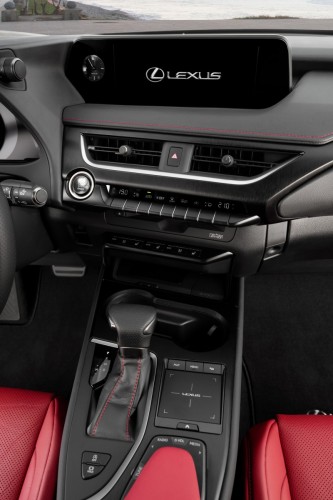
The F SPORT features a larger 8-in. TFT LCD display that varies depending on the powertrain (petrol or hybrid) and the selected drive mode. For the F SPORT only, the movable meter ring, which originated in the Lexus LFA supercar and is also featured in the LC premium coupe, allows displayed content to be easily changed. Pushing a switch on the steering wheel moves the ring to the right and enlarges the multi-information display.
A leather-covered F SPORT steering wheel, leather-trimmed shift knob, aluminium footrest and aluminium pedals are also part of the package.
The UX F SPORT can be equipped with a UX tailored version of the high response Adaptive Variable Suspension (AVS) system that debuted on the Lexus LC and LS flagship models. The system increases damping force to minimize roll when cornering or changing lanes and reduces damping force in straight line driving to preserve ride quality.
Exclusive F SPORT suspension tuning includes specific springs and stabiliser bars, plus a rear performance damper for a more refined ride. The 18-inch, five twin-spoke aluminium alloy wheels, which are unique to the F SPORT, are even more rigid than standard UX wheels, contributing to responsiveness and handling agility.
The UX F SPORT driving experience can be further enhanced with Active Sound Control (ASC), which generates the aural effect of up- and down-shifts like those of a geared automatic transmission. An additional Sonic Interaction Design (SID) function adjusts the sound the vehicle makes when driving in Sport S+ mode (S+ Sound).
 1952
1952





